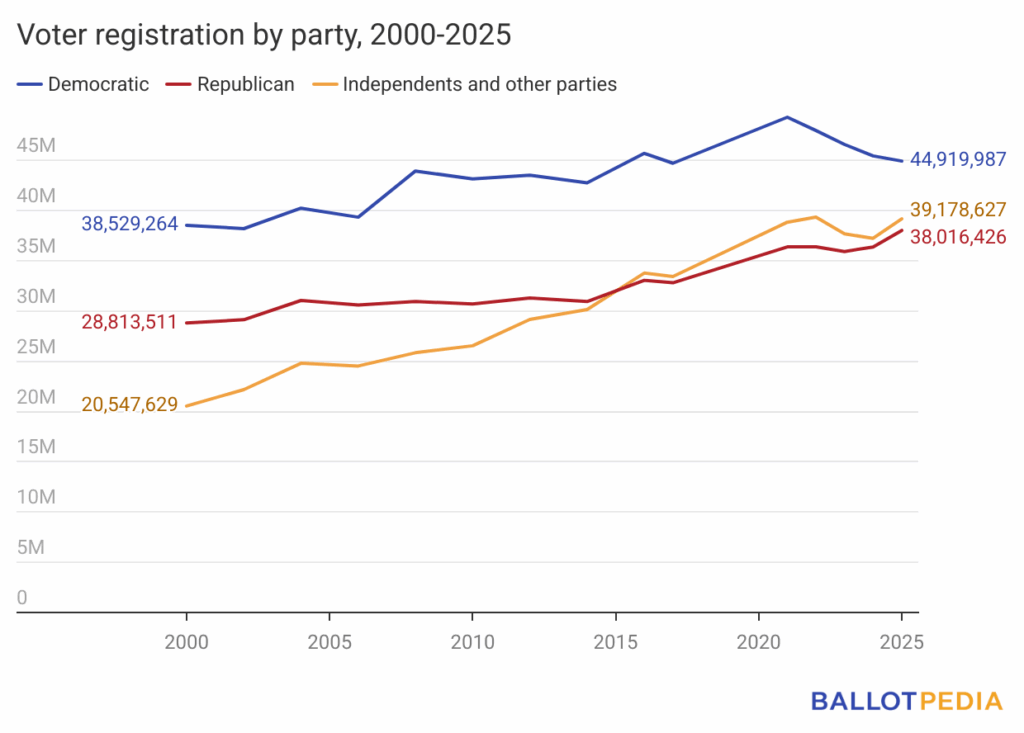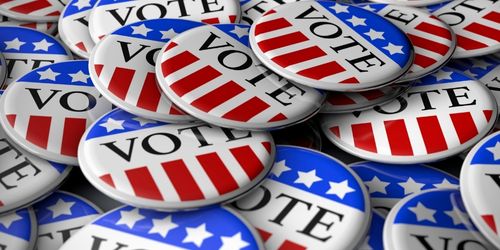Thirty states, the U.S. Virgin Islands, and the District of Columbia offer public information on the registered voters within these states and territories.
Voter registration is the process by which a voter can become eligible to vote in a state or territory. Forty-nine states allow it, with the exception of North Dakota. Among the information included is the partisan affiliation of voters. Ballotpedia has recently expanded its coverage to offer information on this data where available. While it is not available in every state, the states that do provide them have been published with 2025 numbers, in addition to historical numbers.

Of the states with available data, Democrats have the largest number of registered voters in 11 states and territories, Republicans in 11 states, and independents in 10 states. In the 2024 presidential election, with the U.S. Virgin Islands excluded, Kamala Harris (D) won nine of the 10 states with the most registered Democratic voters, while Donald Trump (R) won every state with Republicans as the largest majority, and Louisiana, where Democrats have the most registered voters with 37% of registered voters to Republicans’ 35%. In states where independents comprise the largest number of registered voters, Harris won six states and Trump won four.

Across these places that offer partisan registration data, Democrats have the most registered voters cumulatively with 44.9 million, followed by independents and other third parties with 39.2 million, and Republicans with 38 million. Independents and third parties surpassed Republicans in 2016, and have had more than Republicans since then.

Combining both the Democratic and Republican parties' registered totals, the major parties make up 82.9 million voters, compared to 39.2 million for independents and other third parties. The combined number of registered Democratic and Republican voters is about 71% of the total number.


